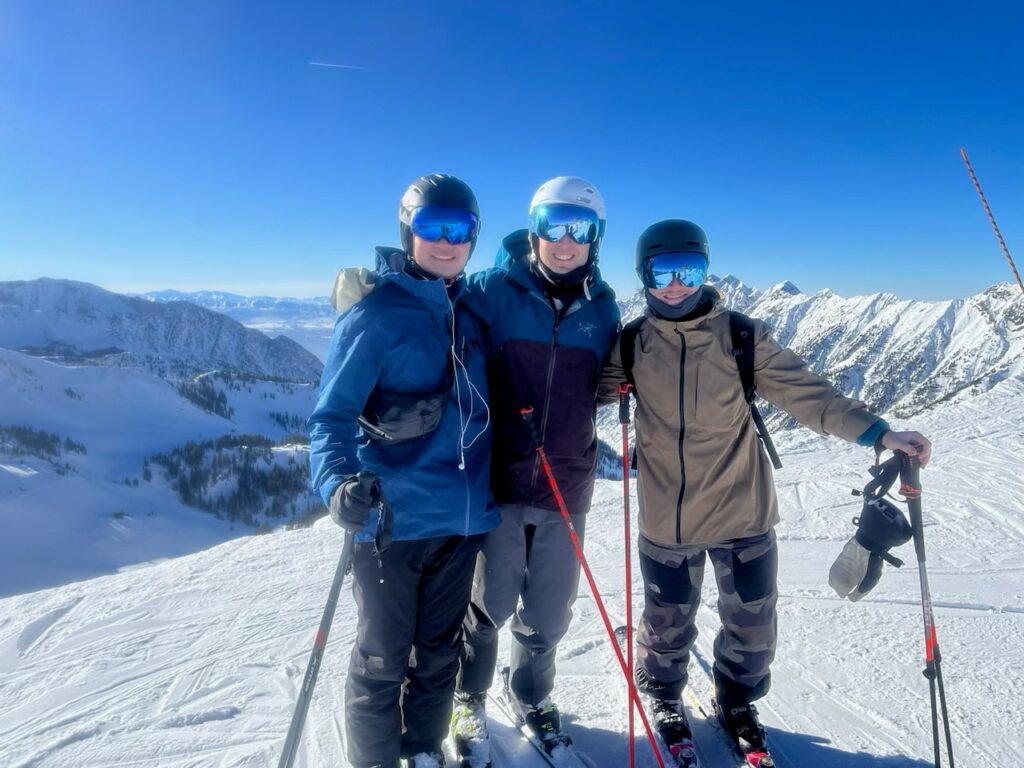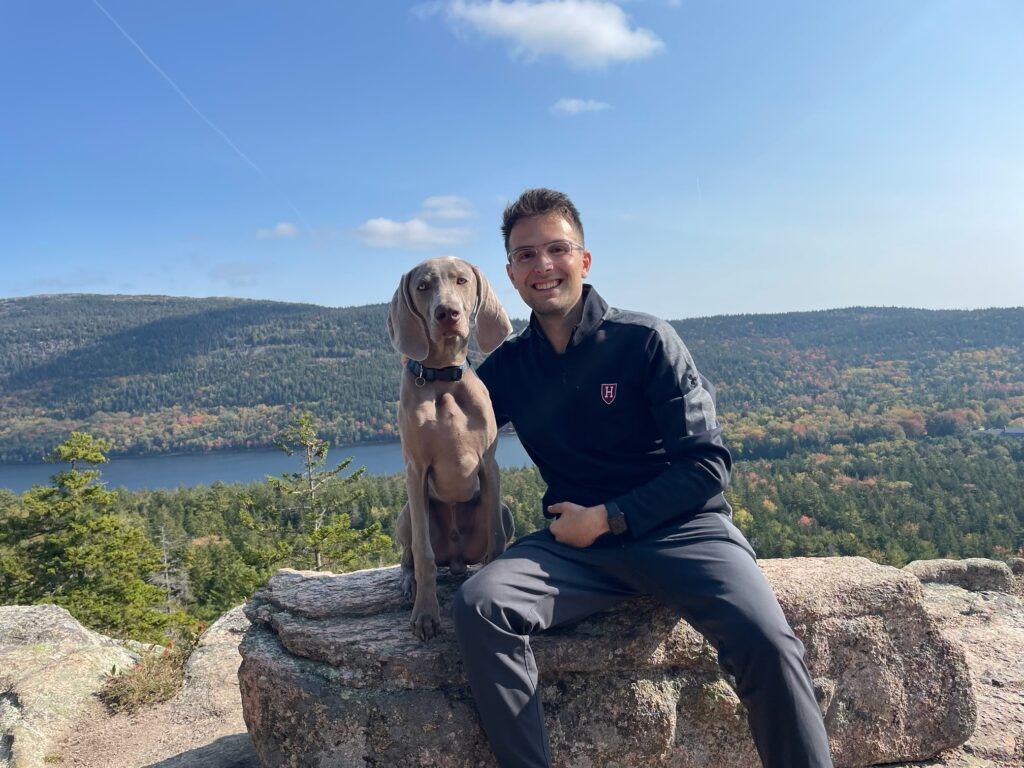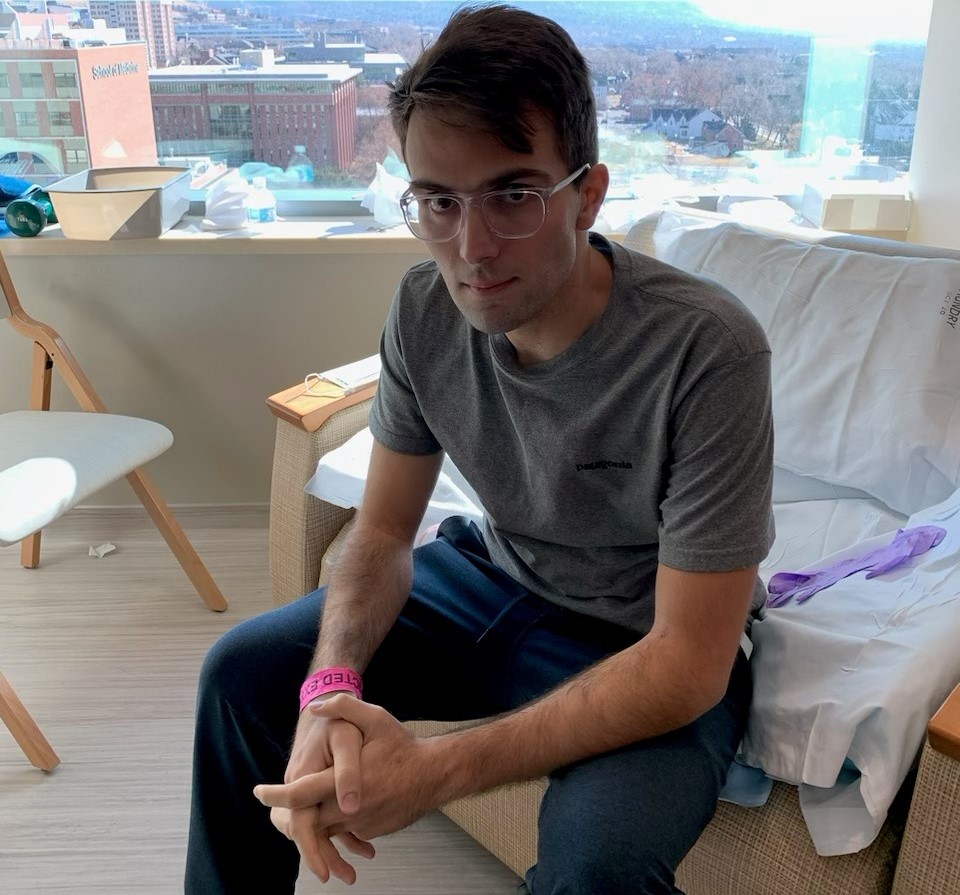Menu
By Jeannie Counce

For many patients on home parenteral nutrition (PN), the therapy modality is the result of a sustained chronic illness, such as Crohn’s disease or cancer, or a complex and frustrating diagnostic process, like that associated with gastroparesis. While it’s less than ideal to rely on life-sustaining nutrition support, when it’s well calibrated for the patient, PN can offer a modicum of clinical stability and even independence on an otherwise long and difficult journey.
That wasn’t the case for Luccas Borges, a 25-year old graduate student, whose path to PN was far more abrupt. In December 2020, Borges was skiing at Deer Valley in Utah when one of his bindings snapped and he lost a ski. Efforts to regain control while careening downhill at an estimated 50 mph failed and Borges collided with a support column for the ski-lift. He sustained blunt force trauma to the chest. The compression between the pole and his spine severed a branch of his aorta, the superior mesenteric artery, which feeds the gastrointestinal tract and fractured his L1, L2, and L3 vertebrae.
Borges’s injuries were severe. Hovering near death, he was immediately rushed to the University of Utah emergency room where he received 177 units of blood products and coded for 10 minutes. Against all odds, he was stabilized and remained in ICU in a coma for nearly a week. Later, he underwent spinal fusion and removal of all but 6 inches of his small intestine. “At first the surgeons didn’t connect the duodenum to the transverse colon, but one physician saw value in it,” explains Borges. “Because of that, I can live without ostomy and can still eat and drink. However, I can’t absorb any nutrients, so I was put on PN right away.”
Miraculously, Borges left the hospital 3 weeks and 1 day after the accident he was not expected to survive. But the road to recovery, including learning to live with PN, was long. “It’s been an adventure from day 1 finding out what’s the path forward,” he says. “I’m blessed. I have had an amazing medical team. And, I have been determined not to let any of it stand in my way.”
“When I was discharged from the hospital, there was a lot going on,” Borges recalls. “There was all this post-trauma recovery in the forefront.” He needed a home care nurse to manage his medications and injuries as he relearned to walk. In addition, Borges had 4 drains, could barely talk, and developed pneumonia from being intubated and having a fractured sternum. “I also developed deep vein thrombosis in my right arm and needed blood thinner injections every day— but only in my left arm.”
All the while, Borges was receiving PN through a port. “It needed to be accessed for long periods of time, it was difficult for me to access, and I was just trying to learn how to do things like take a shower and get dressed with all the tubes and bandages,” he continues. “It wasn’t a good solution, but at the time I was viewing PN as a stop gap to a GI transplant.”


As he recovered, the acute health issues resolved and Borges learned more about how to manage on PN therapy. “At the beginning of the recovery journey PN was a small part, but it became increasingly more important,” he recalls. “My care team started teaching me to manage my PN-how to prime the pump and flush the line. Soon, I found that there were many ways to maximize the therapy to make it easier and to fit my lifestyle.” Borges was able to have input into where to place a central line and his care team began to dial in his formulation. Despite a few bouts with dehydration, infected lines, and a silicone allergy, he became more independent, even learning to do his dressing changes. “Now I go in for labs and don’t even need home health,” he says proudly.
“I’ve adjusted to life on PN and have been living independently, even traveling around,” says Borges who texts regularly with physicians at the University of Chicago and doesn’t need many adjustments to his PN formulation. His home infusion pharmacy works with the physicians, getting the PN and supplies to him wherever he may be. “I can tell them where I’m traveling and they help figure out what will work best for delivery either via shipment or local branch—they are beyond accommodating,” he says. “One time I was in Texas and brought enough PN with me, so I didn’t transfer branches. But while I was there, I realized I hadn’t packed enough syringes for flushing. They worked with the local branch and got some to me the same day.”
“I was pretty gung-ho on a transplant at first, but now I’m stable on PN and feeling like I might wait. Especially with these new lipid formulations that are easier on the liver,” he reasons.
Now Borges is rethinking his previous resolve regarding GI transplant. “I’ve made the rounds of medical centers and consulted with many medical teams. I’m on the transplant list, but at this point really weighing the pros and cons and leaning towards delaying,” he reflects. PN can make a patient prone to line infections and take a toll on the kidneys and liver, creating the need for a larger, multi-organ transplant, he explains. On the other hand, transplant is a risky procedure that may have complications, it means continuous immunosuppressive drugs, and its likely to only last 10 years, which means several transplants over the course of his lifetime.


“I was pretty gung-ho on a transplant at first, but now I’m stable on PN and feeling like I might wait. Especially with these new lipid formulations that are easier on the liver,” he reasons. “I can still eat and drink, which exercises essential muscles so they will function if I choose transplant later.” An energetic high-achiever, Borges has other ambitions. With an economics degree from Harvard, 1 year of graduate school, and experience in a few roles at investing firms. Borges wants to complete his MBA program and start his own business. “I’m super fortunate to be in a situation where I’ll be starting a a new firm after school,” he says. He’s also an active advocate for health care groups, including Trauma Centers of America, the Oley Foundation, ASPEN, and others. “I want to give back by calling attention to the opportunities in health care for improving outcomes,” says Borges.
“I’ve been able to live the way I live because of the teams. It really does take a village in health care,” he explains. “Everyone works together for the patient. It matters what each person does because if any one part doesn’t work right, the whole thing doesn’t work.”
Borges also believes that he’s lucky because he learned to navigate quickly. “It’s got to be hard for providers to put the impetus on the patient to be the quarterback of their own care, but the patient needs to identify their goals and needs so their team knows what to optimize for,” he says. “My team did a great job of coaching me through that and I’m so grateful to them for showing me that I have options.”
“I once had a doctor say to me, ‘remember what it was like to not know?’ and that really stuck with me,” Borges recalls. “The clinicians have so much knowledge and expertise. They’ve seen people on these trajectories before and they can imagine where you’ll end up and coach you in that direction.”

Jeannie Counce is the editorial director of NHIA. You can reach her at Jeannie.Counce@nhia.org
| Cookie | Duration | Description |
|---|---|---|
| cookielawinfo-checbox-analytics | 11 months | This cookie is set by GDPR Cookie Consent plugin. The cookie is used to store the user consent for the cookies in the category "Analytics". |
| cookielawinfo-checbox-functional | 11 months | The cookie is set by GDPR cookie consent to record the user consent for the cookies in the category "Functional". |
| cookielawinfo-checbox-others | 11 months | This cookie is set by GDPR Cookie Consent plugin. The cookie is used to store the user consent for the cookies in the category "Other. |
| cookielawinfo-checkbox-necessary | 11 months | This cookie is set by GDPR Cookie Consent plugin. The cookies is used to store the user consent for the cookies in the category "Necessary". |
| cookielawinfo-checkbox-performance | 11 months | This cookie is set by GDPR Cookie Consent plugin. The cookie is used to store the user consent for the cookies in the category "Performance". |
| viewed_cookie_policy | 11 months | The cookie is set by the GDPR Cookie Consent plugin and is used to store whether or not user has consented to the use of cookies. It does not store any personal data. |